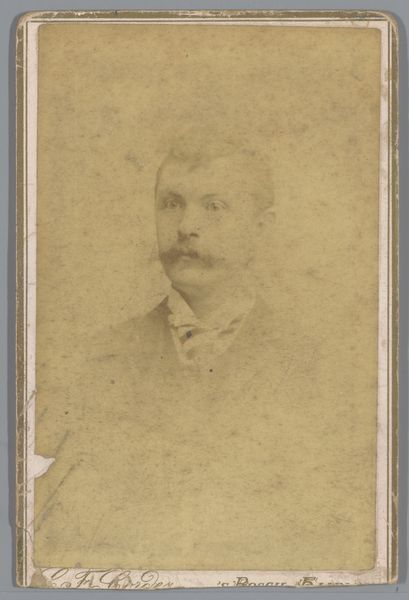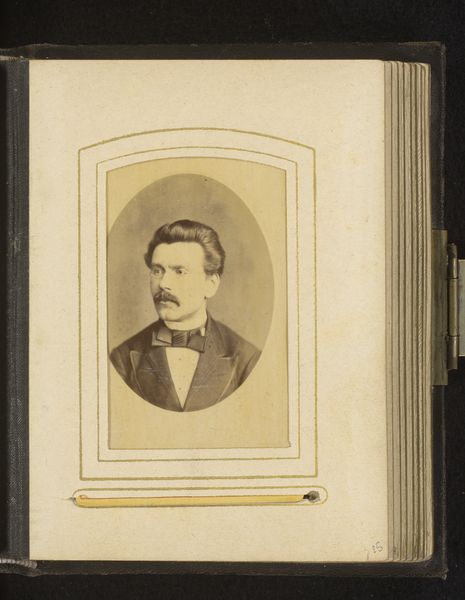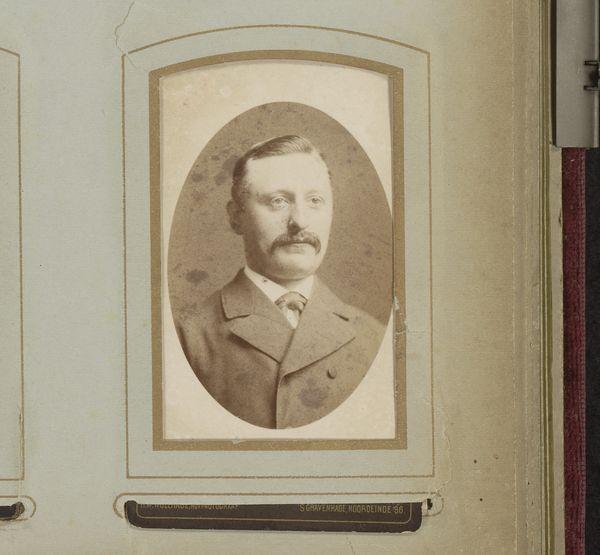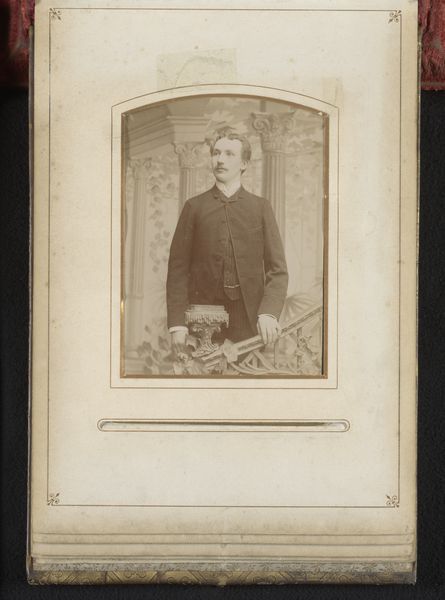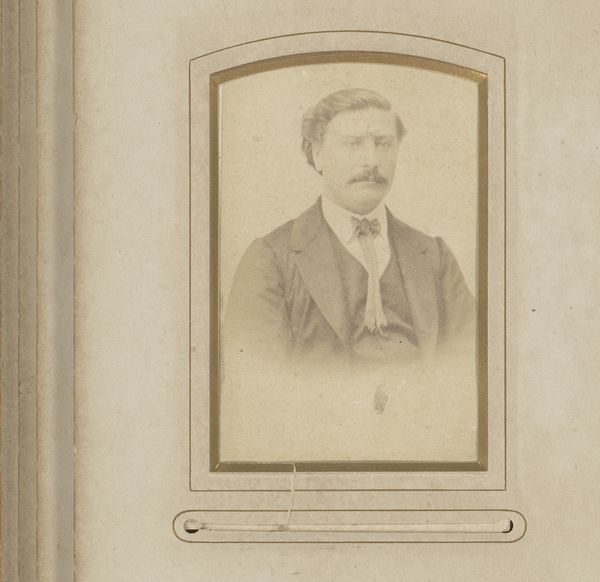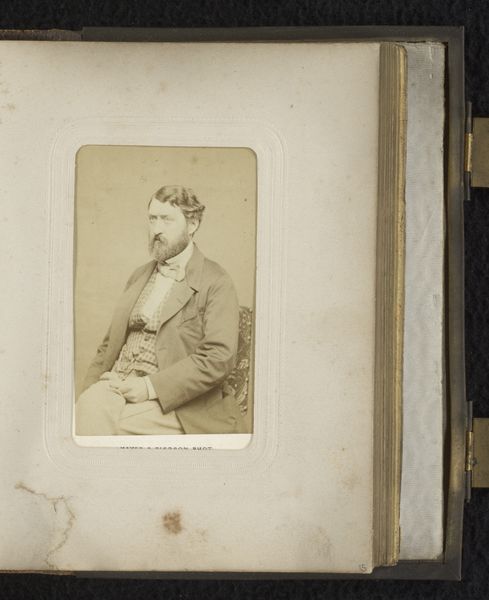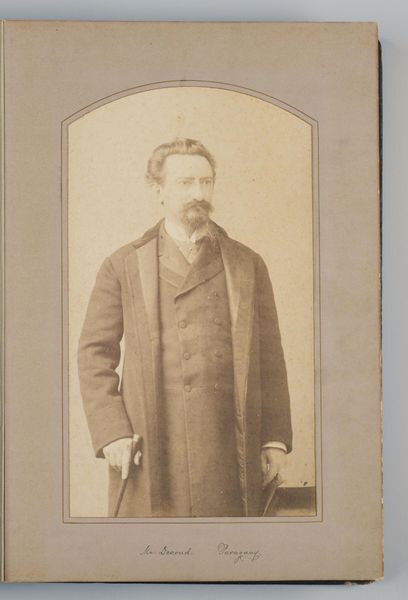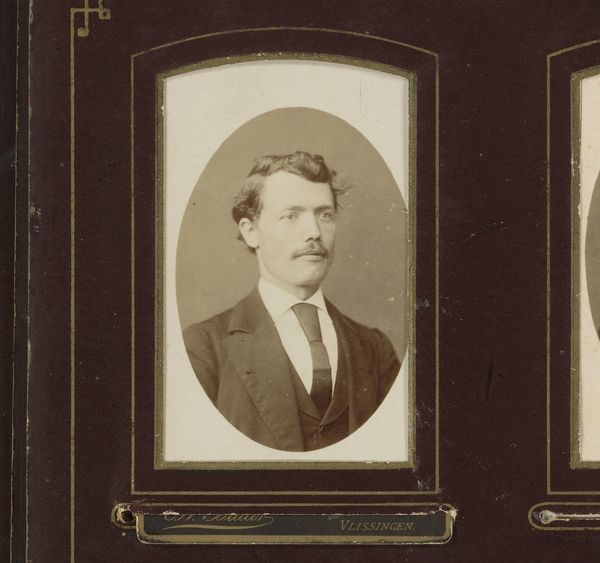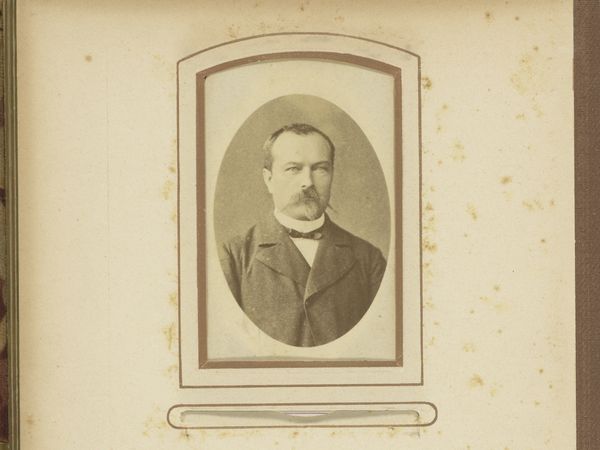
photography
#
portrait
#
photography
#
genre-painting
#
realism
Dimensions: height 86 mm, width 55 mm
Copyright: Rijks Museum: Open Domain
Editor: Here we have a portrait of a man by Sabatier, dating from between 1860 and 1900. It's a photographic portrait in a kind of album. I'm struck by the man's expression and formal attire. What do you see in this piece? Curator: This photograph, like many portraits of its time, is deeply entrenched in the socio-political dynamics of class and representation. What does it mean to present oneself in such a posed, formal manner? The carefully constructed image suggests a desire to project a particular identity – one of respectability and perhaps even aspiration. We can also look at the implicit power dynamics at play. Consider who has access to portraiture at this time? Editor: That’s a great point. So, it's less about simply capturing an image and more about actively constructing a social role? The choice of clothing, pose… it all communicates something, right? Curator: Exactly. And what does it communicate? This is a photographic realism used as a tool for social positioning. How might gender and race intersect within the context of these portraits? How do marginalized groups get excluded from or engage with those traditions? Can we consider it now, understanding photography from a contemporary viewpoint? Editor: So it is an assertion of belonging to a certain class and gender… it does makes you wonder about what he’s intentionally omitting. Thank you for broadening my viewpoint of photography in this historical era. Curator: Likewise. By viewing artworks such as these through a variety of analytical lenses, we not only decode the embedded power structures but also empower ourselves to challenge them.
Comments
No comments
Be the first to comment and join the conversation on the ultimate creative platform.
